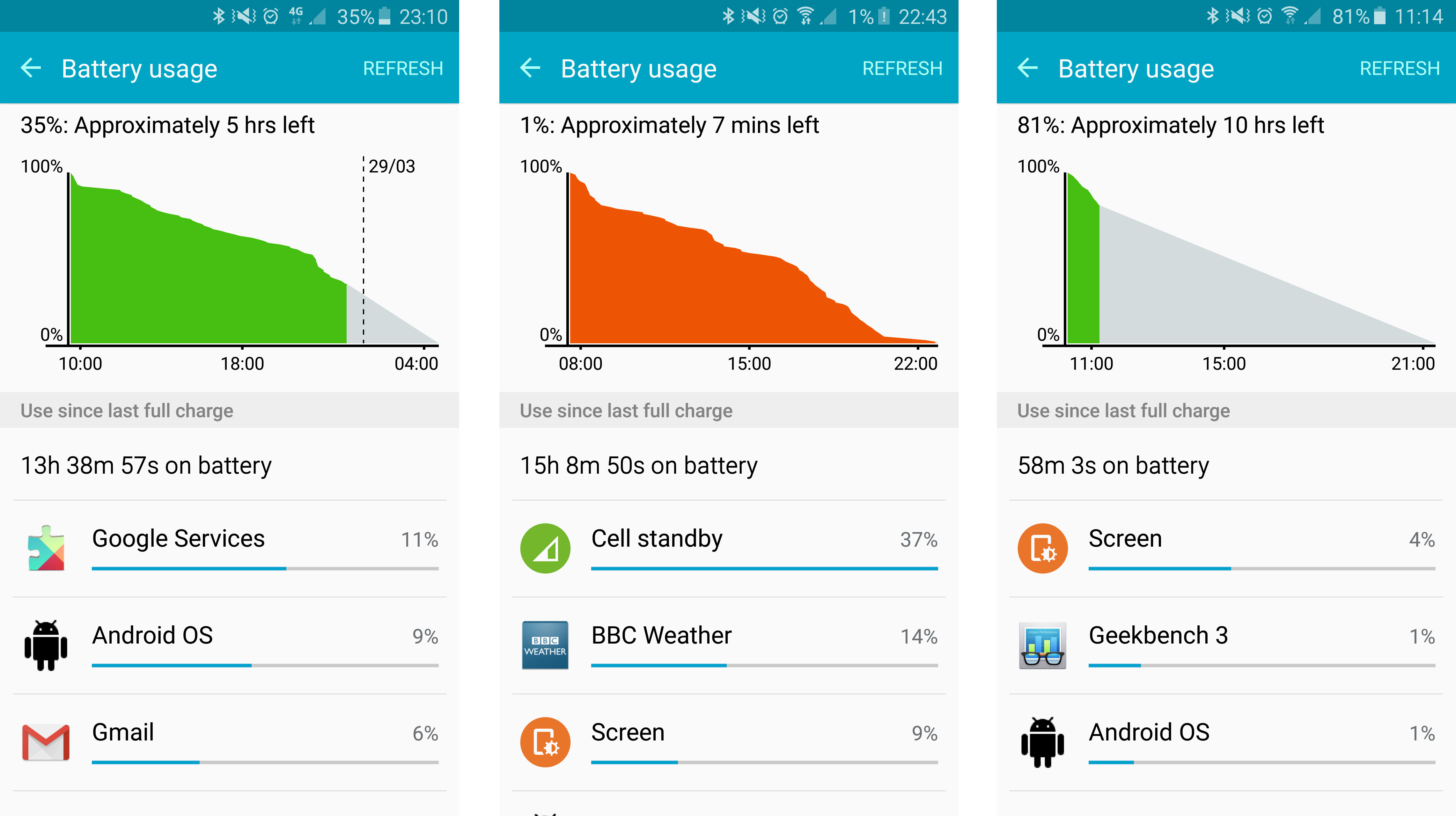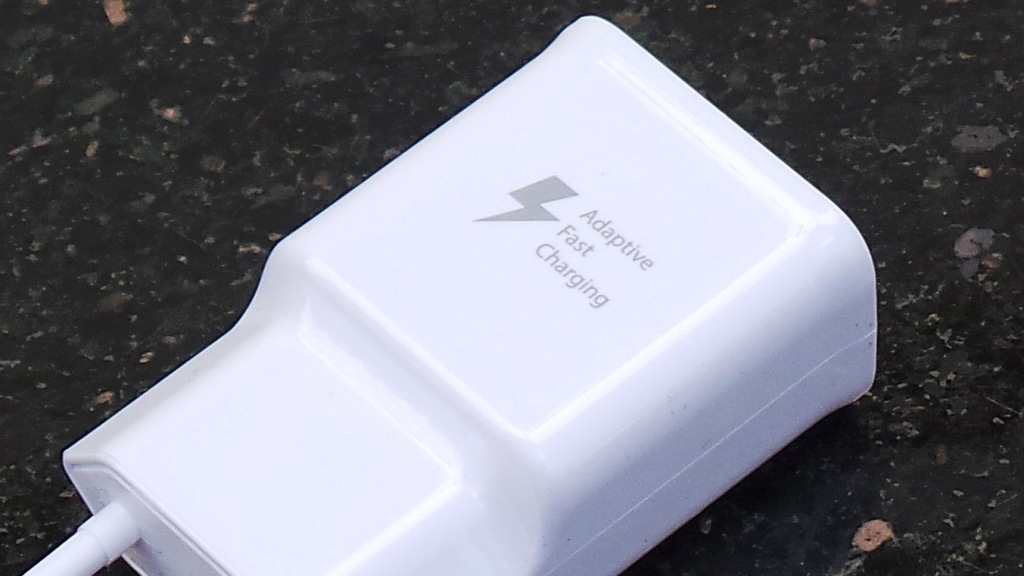Why you can trust TechRadar
When the Samsung Galaxy S6 Edge was announced at MWC 2015 concerns were raised over the battery life of the handset.
Could the 2600mAh battery - a full 200mAh smaller than the power pack found in last year's Galaxy S5 - really provide a decent performance? Sadly, the answer is no.
With a higher resolution display and more powerful processor to contend with the battery inside the Galaxy S6 Edge struggles to see out a full day on a single charge.
If you think that's bad spare a thought for the Galaxy S6 which sports the same high-res screen and power, but has to make do with a smaller 2550mAh power pack.
Something else which may be a dagger through the heart of any loyal Samsung owner is the fact the battery can't be removed - and thus swapped out for a full charged pack.
It's a compromise Samsung has made for an improved design - and the S6 Edge does look great - but also because it believes it can now deliver a strong battery performance. Hmm.

During moderate use throughout the day which started at 7am and included an hour or two of Spotify, an hour of gaming, various messages over a variety of apps, some web browsing and emails, a few camera shots and the odd phone call, I found the S6 Edge was limping towards the charger around 10pm.
Considering we were seeing around a day and a half of battery life from 2014's flagships with similar usage, this drop in endurance is a real shame.
The effect the screen has on battery life is clear - I easily chewed through the first 20% of battery within the first couple of hours of the day during my morning commute by continuously gaming and streaming music to my Bluetooth headphones.
A small saving grace is the Galaxy S6 Edge loses very little power in standby mode. If your phone spends most of the day sitting on your desk, in your bag or hidden in a pocket you should have a decent slug of life left when it comes to the evening.
Samsung's answer to this rather questionable battery life is its fast charging technology. The Galaxy S6 Edge charges 1.5 time faster than previous Galaxy S models, and it can regain four hours of usage from just 10 minutes of charging.

Now that is impressive, and it is achievable, but only with the bundled charging block that comes in the box.
If you leave this charger at home and borrow someone's when you're out and about then you won't benefit from this super speedy power up.
The Galaxy S6 Edge is also wireless charging enabled, and it's compatible with most wireless charging pads and mats currently on the market, which makes it easier to refuel - although again you won't get the fast charging functionality here.
Rather surprisingly when I put the S6 Edge through the TechRadar video test which sees a full HD, 90 minute video played at full brightness, with accounts syncing in the background over Wi-Fi, it lost just 15%.
That's not as good as the Samsung Galaxy Note 4 or the LG G Flex 2, but it does beat the HTC One M9, iPhone 6 Plus and Sony Xperia Z3. It's not all bad news then.

If you're really struggling for battery then you can always turn to Samsung's power saving modes.
The standard power saving mode limits performance, reduces screen brightness, frame rate and timeout and a few other bits and pieces to try and eke more time from the power pack.
If that's not enough you can take extreme measures and turn on Ultra Power Saving Mode. This locks down the entire Android interface to leave you with a limited black and white panel with access to just six core apps.
I switched on Ultra Power Saving Mode with just 4% of battery left and it managed to keep the Galaxy S6 Edge going for another two hours - which is pretty impressive.

TechRadar's former Global Managing Editor, John has been a technology journalist for more than a decade, and over the years has built up a vast knowledge of the tech industry. He’s interviewed CEOs from some of the world’s biggest tech firms, visited their HQs, and appeared on live TV and radio, including Sky News, BBC News, BBC World News, Al Jazeera, LBC, and BBC Radio 4.
